Search Result
Results for "
Sodium bicarbonate
" in MedChemExpress (MCE) Product Catalog:
11
Biochemical Assay Reagents
1
Isotope-Labeled Compounds
| Cat. No. |
Product Name |
Target |
Research Areas |
Chemical Structure |
-
- HY-Y0756
-
|
Sodium hydrogen carbonate
|
Biochemical Assay Reagents
|
Others
|
|
Sodium bicarbonate, also known as baking soda, sodium bicarbonate, or sodium bicarbonate, is neutral to slightly alkaline. And it is susceptible to moisture and decomposition in the air. Sodium bicarbonate is widely used in food, pharmaceutical, cosmetics and other fields, the main uses include buffer, seasoning, disinfectant, pharmaceutical and proton gradient regulator. In the food industry, it is often used as a flour starter or leavening agent to make food swell up and become softer. Sodium bicarbonate is also commonly used as an antacid to suppress gastrointestinal disorders, neutralize stomach acid and reduce stomach discomfort.
|
-
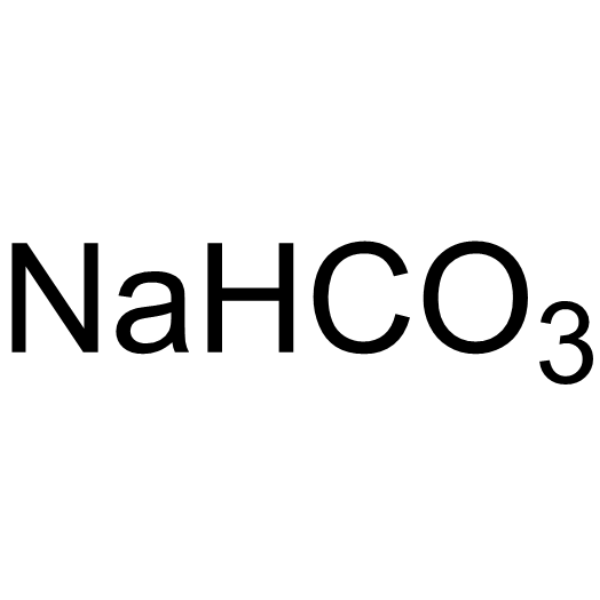
-
- HY-W251598C
-
|
Sodium hydrogen carbonate for cell culture; Soda bicarbonate for cell culture
|
Biochemical Assay Reagents
|
Others
|
|
Sodium bicarbonate, for cell culture, an inorganic salt, is neutral to slightly alkaline. And it is susceptible to moisture and decomposition in the air. Sodium bicarbonate is widely used in food, pharmaceutical, cosmetics and other fields, the main uses include buffer, seasoning, disinfectant, pharmaceutical and proton gradient regulator. Sodium bicarbonate is also commonly used as an antacid to suppress gastrointestinal disorders, neutralize stomach acid and reduce stomach discomfort.
|
-
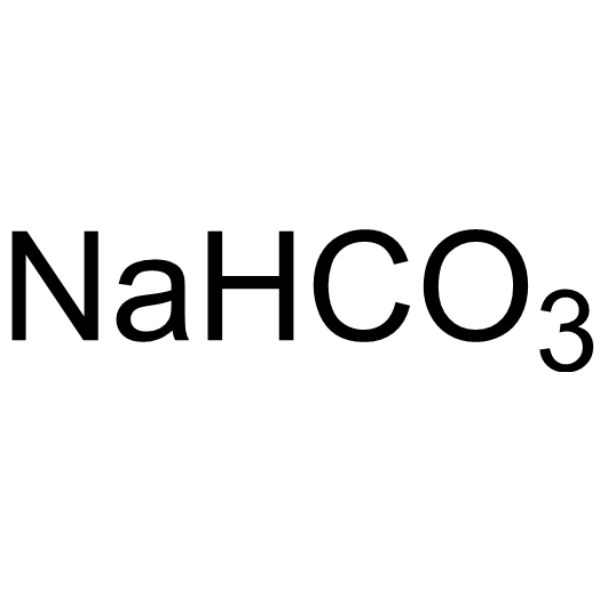
-
- HY-W251598S
-
-
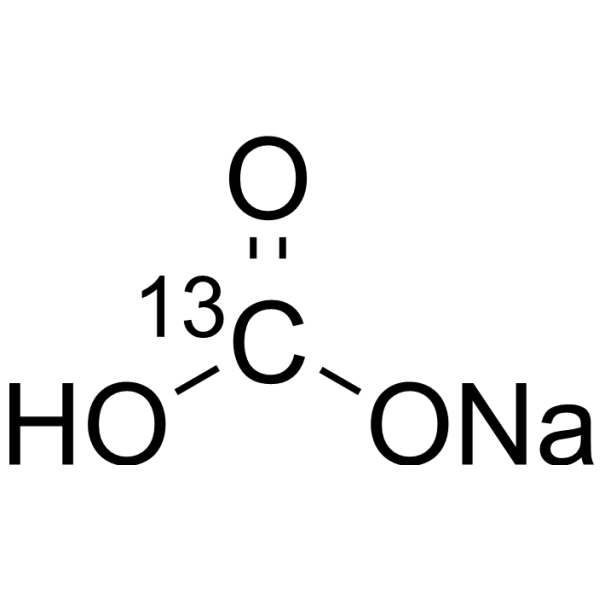
-
- HY-W093399
-
-
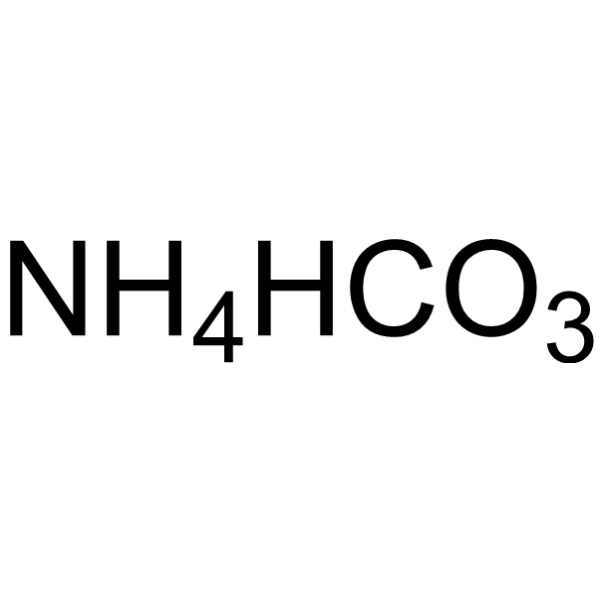
-
- HY-W251598J
-
|
Sodium hydrogen carbonate (Pharmaceutical primary standard, USP); Soda bicarbonate (Pharmaceutical primary standard, USP)
|
Bacterial
|
Infection
|
|
Sodium bicarbonate, United States Pharmacopeia (USP) Reference Standard is an inorganic salt. Sodium bicarbonate shows antimicrobial activity .
|
-

-
- HY-P1244
-
|
Secretin (rat)
|
Secretin Receptor
|
Neurological Disease
|
|
Secretin (33-59), rat is a 27-aa peptide, acts on secretin receptor, enhances the secretion of bicarbonate, enzymes, and K + from the pancreas.
|
-

-
- HY-P1535
-
|
Porcine secretin acetate
|
Secretin Receptor
|
Inflammation/Immunology
|
|
Secretin, porcine (Porcine secretin acetate) is a 27-amino acid peptide, acting on pancreatic acinar cells and ductal epithelial cells stimulating the production of bicarbonate rich fluid.
|
-
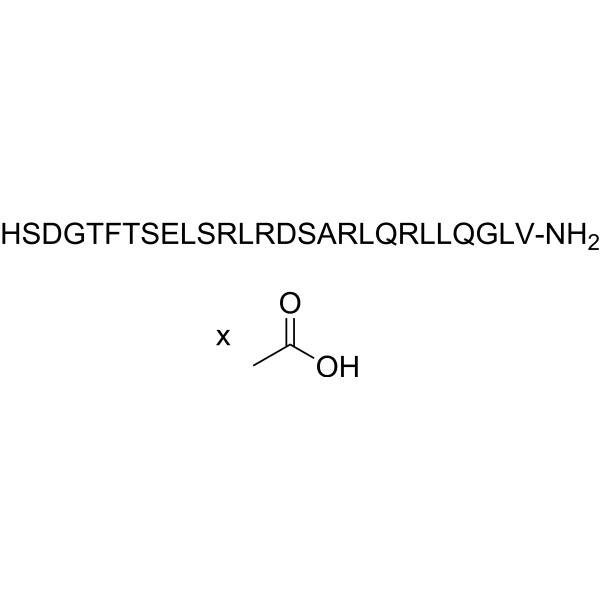
-
- HY-P1244A
-
|
Secretin (rat) (TFA)
|
Secretin Receptor
|
Neurological Disease
|
|
Secretin (33-59), rat (TFA) is a 27-aa peptide, which acts on secretin receptor, and enhances the secretion of bicarbonate, enzymes, and K + from the pancreas .
|
-

-
- HY-P1535A
-
|
Porcine secretin TFA
|
Secretin Receptor
|
Inflammation/Immunology
|
|
Secretin, porcine TFA (Porcine secretin TFA) is a 27-amino acid peptide, acting on pancreatic acinar cells and ductal epithelial cells stimulating the production of bicarbonate rich fluid .
|
-

-
- HY-137364
-
|
|
Carbonic Anhydrase
|
Cardiovascular Disease
Metabolic Disease
|
|
Disulfamide, an orally active diuretic, is a carbonic anhydrase inhibitor with the IC50 value of 0.07 μM. Disulfamide leads to diuresis by inhibiting carbonic anhydrase and preventing the reabsorption of sodium and bicarbonate in the proximal tubule .
|
-
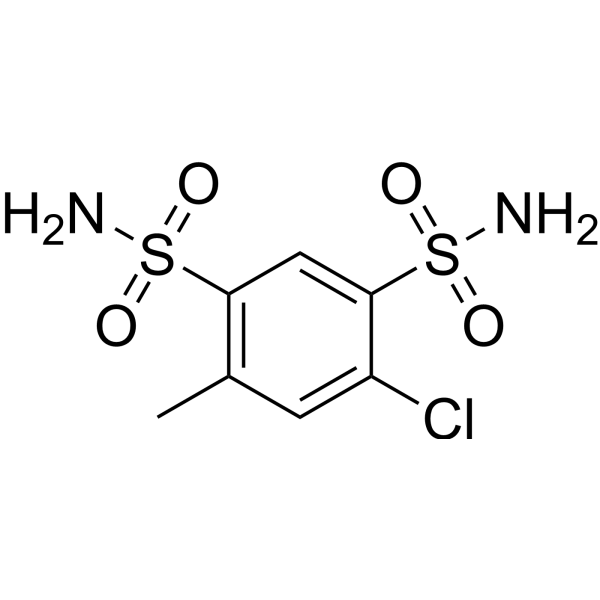
-
- HY-P1784
-
|
|
Secretin Receptor
|
Endocrinology
|
|
Secretin, canine is an endocrine hormone that stimulates the secretion of bicarbonate-rich pancreatic fluids. Secretin, canine can regulates gastric chief cell function and paracellular permeability in canine gastric monolayers by a Src kinase-dependent pathway .
|
-

-
- HY-B1273
-
|
1-Phenyl-1-pentanol
|
Fluorescent Dye
|
Endocrinology
|
|
Fenipentol (1-Phenyl-1-pentanol), a synthetic derivative of an ingredient of Curcuma longa that is used as a condiment and dye. Fenipentol is also an orally active choleretic agent that plays an important role in release of secretin, gastrin, and pancreatic secretion of bicarbonate and protein .
|
-

-
- HY-P1775
-
|
EC 4.2.1.1
|
Carbonic Anhydrase
|
Neurological Disease
Metabolic Disease
Cancer
|
Carbonic anhydrase, Bovine erythrocytes (EC 4.2.1.1) is ubiquitous zinc-containing metalloenzyme present in prokaryotes and eukaryotes. Carbonic anhydrase can catalyze reversible conversion of carbon dioxide to bicarbonate and protons. Carbonic anhydrase can be used for the research of cancer, glaucoma, obesity and epilepsy .
|
-
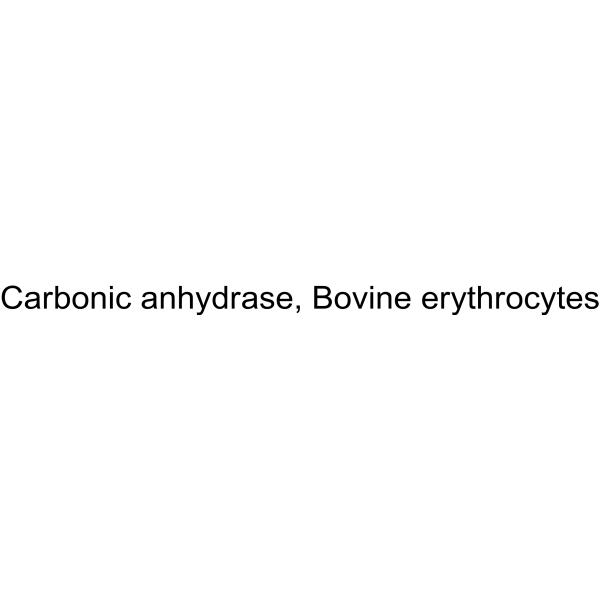
-
- HY-W127787
-
|
L-(+)-Tartaric acid Sodium hydrate
|
Endogenous Metabolite
|
Others
|
|
L-Tartaric acid (L-(+)-Tartaric acid) sodium hydrate is the enantiomer of D-tartaric acid. L-Tartaric acid (HY-Y0293) is a white crystalline dicarboxylic acid found in many plants, such as grapes, and is one of the main organic acids in wine. L-Tartaric acid sodium hydrate which acts as a flour bulking agent and as a food additive can interact with sodium bicarbonate to produce carbon dioxide .
|
-
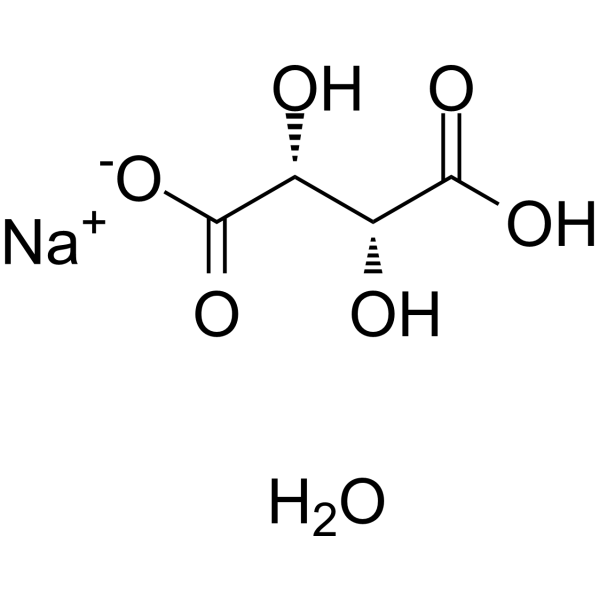
-
- HY-E70015
-
|
PEPC
|
Others
|
Others
|
|
Phosphoenolpyruvate carboxylase, Microorganism (PEPC) is a carbon dioxide fixing enzyme that in an irreversible manner and in the presence of Mg 2+, converts phosphoenolpyruvate and bicarbonate into oxaloacetate and inorganic phosphorus. Phosphoenolpyruvate carboxylase catalyses the primary assimilation of CO(2) in Crassulacean acid metabolism plants. Phosphoenolpyruvate carboxylase plays a major role in setting the day-night pattern of metabolism in plants .
|
-
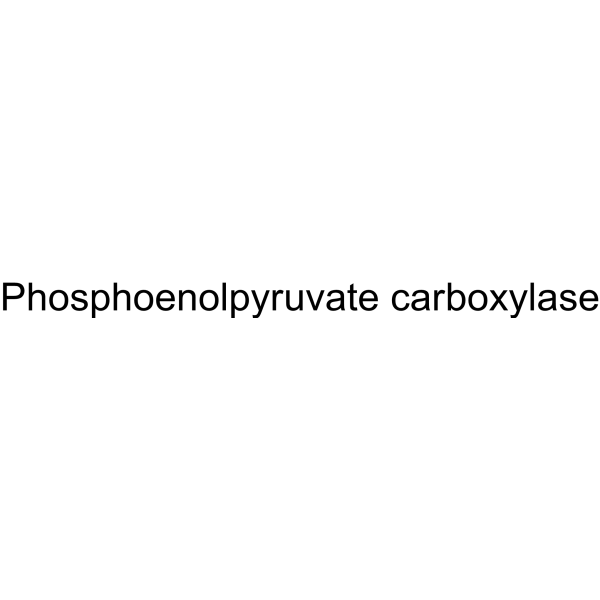
-
- HY-155887
-
|
DSPE-PEG-NH2, MW 3400 ammonium
|
Liposome
|
Others
|
|
DSPE-PEG-Amine, MW 3400 (ammonium) is a phosphoethanolamine involved in the synthesis of liposomes for delivery systems. The amino group of DSPE-PEG-Amine, MW 3400 (ammonium) can be converted to aromatic aldehydes by reacting with acetone-protected aromatic hydrazines on the surface of bovine carbonic anhydrase (BCA) molecules. Liposomes form a liposome-BAH-BCA conjugate by forming a bisarylhydrazone (BAH) with the target enzyme molecule. The conjugate catalyzes the hydration of carbon dioxide to bicarbonate.
|
-

-
- HY-155908
-
|
DSPE-PEG-NH2, MW 10000 ammonium
|
Liposome
|
Others
|
|
DSPE-PEG-Amine, MW 10000 (ammonium) is a phosphoethanolamine involved in the synthesis of liposomes for delivery systems. The amino group of DSPE-PEG-Amine, MW 10000 (ammonium) can be converted into aromatic aldehydes by reacting with acetone-protected aromatic hydrazines on the surface of bovine carbonic anhydrase (BCA) molecules. Liposomes form a liposome-BAH-BCA conjugate by forming a bisarylhydrazone (BAH) with the target enzyme molecule. The conjugate catalyzes the hydration of carbon dioxide to bicarbonate.
|
-
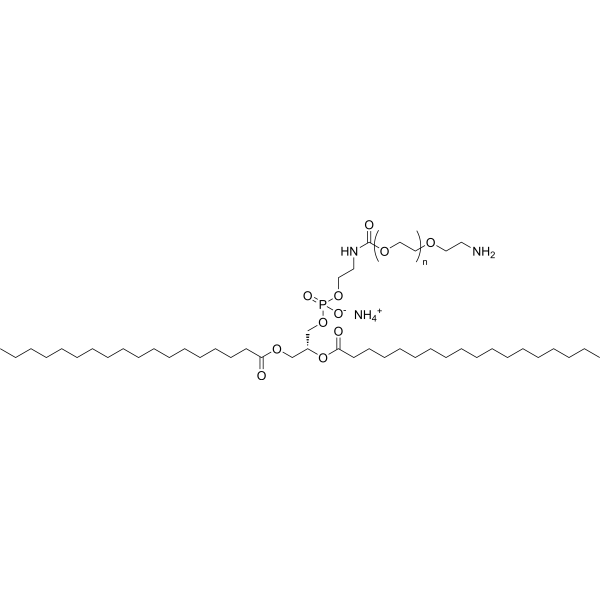
-
- HY-155907
-
|
DSPE-PEG-NH2, MW 5000 ammonium
|
Liposome
|
Others
|
|
DSPE-PEG-Amine, MW 5000 (ammonium) is a phosphoethanolamine involved in the synthesis of liposomes for delivery systems. DSPE-PEG-Amine, MW 5000 (ammonium) amino group can be converted to aromatic aldehydes that react with acetone-protected aromatic hydrazides on the surface of the bovine carbonic anhydrase (BCA) molecule. Liposomes produce liposome-Bah-BCA conjugates by forming diaryl hydrazone (BAH) with target enzyme molecules. The conjugate catalyzes the hydration of carbon dioxide to bicarbonate.
|
-
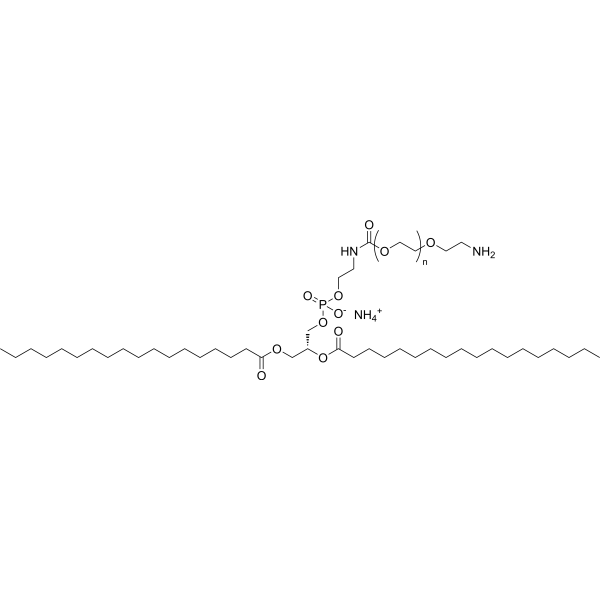
-
- HY-W440823A
-
|
DSPE-PEG-NH2, MW 1000 ammonium
|
Liposome
|
Others
|
|
DSPE-PEG-Amine, MW 1000 (ammonium) is a phosphoethanolamine involved in the synthesis of liposomes for delivery systems. The amino group of DSPE-PEG-Amine, MW 1000 (ammonium) can be converted to an aromatic aldehyde, which reacts with an acetone-protected aromatic hydrazine on the surface of the bovine carbonic anhydrase (BCA) molecule. Liposomes form a liposome-BAH-BCA conjugate by forming a bisarylhydrazone (BAH) with the target enzyme molecule. The conjugate catalyzes the hydration of carbon dioxide to bicarbonate.
|
-

-
- HY-109538
-
|
|
Secretin Receptor
|
Neurological Disease
Metabolic Disease
|
|
Secretin (swine), a neuroendocrine hormone, is the first hormone to be identifie and is secreted by S cells that are localized primarily in the mucosa of the duodenum. Secretin also is a 27-amino acid peptide, which acts on secretin receptors. Secretin is expressed by cells in all mature enteroendocrine cell subsets and can be prompted by fatty acids. Secretin stimulates the secretion of pancreatic water and bicarbonate. Secretin exerts various effects in organs, can be used for the research of digestive system, central nervous system and energy metabolism .
|
-

-
- HY-149276
-
|
|
GLUT
|
Metabolic Disease
|
|
SLC26A3-IN-2 is an orally active inhibitor of anion exchanger protein SLC26A3 (IC50=360 nM). SLC26A3 belongs to solute carrier (SLC) proteins, and the SLC26 family. SLC26 family has broad anion specificity for chloride, bicarbonate, sulfate and oxalate. SLC26A3 down-regulates in adenoma, DRA, involves in in intestinal absorption of chloride and oxalate. The loss of SLC26A3 function mutations is associated with chloride-losing diarrhea .
|
-

-
- HY-149802
-
|
|
GLUT
|
Metabolic Disease
|
|
SLC26A3-IN-1 is an inhibitor of anion exchanger protein SLC26A3 (IC50=340 nM). SLC26A3 belongs to solute carrier (SLC) proteins, and the SLC26 family. SLC26 family has broad anion specificity for chloride, bicarbonate, sulfate and oxalate. SLC26A3 down-regulates in adenoma, DRA, involves in in intestinal absorption of chloride and oxalate. The loss of SLC26A3 function mutations is associated with chloride-losing diarrhea .
|
-
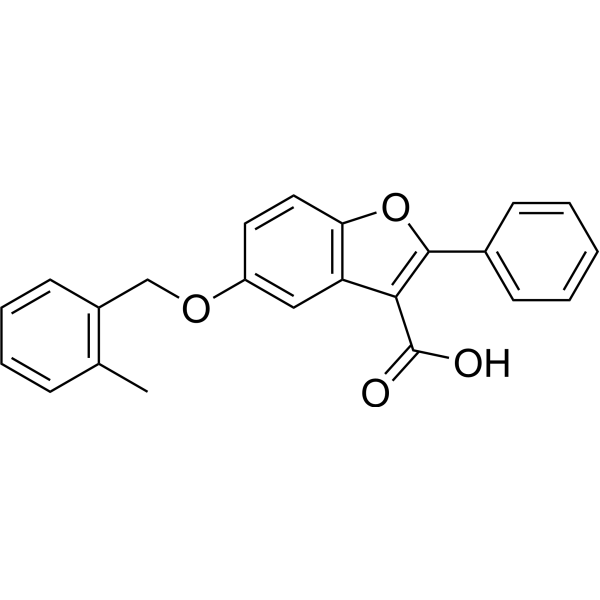
-
- HY-B2227B
-
|
Lactic acid Sodium
|
Others
|
Metabolic Disease
|
|
Lactate (Lactic acid) sodium is the product of glycogenolysis and glycolysis . Lactate (Lactic acid) sodium is an organic salt that is mainly used as a buffer and pH adjuster for injection solutions. Lactate sodium can be metabolized by the body into sodium bicarbonate, which in turn acts to increase the pH of the blood. Lactate sodium is used to improve metabolic acidosis and hypovolemic states. In terms of pharmaceutical preparations, Lactate sodium is often used in combination with sodium chloride, glucose, etc. to form normal saline or compound liquid intravenous injection . Lactate sodium also has antimicrobial activity, which can be used as a food preservative .
|
-

| Cat. No. |
Product Name |
Type |
-
- HY-B1273
-
|
1-Phenyl-1-pentanol
|
Dyes
|
|
Fenipentol (1-Phenyl-1-pentanol), a synthetic derivative of an ingredient of Curcuma longa that is used as a condiment and dye. Fenipentol is also an orally active choleretic agent that plays an important role in release of secretin, gastrin, and pancreatic secretion of bicarbonate and protein .
|
| Cat. No. |
Product Name |
Type |
-
- HY-Y0756
-
|
Sodium hydrogen carbonate
|
Biochemical Assay Reagents
|
|
Sodium bicarbonate, also known as baking soda, sodium bicarbonate, or sodium bicarbonate, is neutral to slightly alkaline. And it is susceptible to moisture and decomposition in the air. Sodium bicarbonate is widely used in food, pharmaceutical, cosmetics and other fields, the main uses include buffer, seasoning, disinfectant, pharmaceutical and proton gradient regulator. In the food industry, it is often used as a flour starter or leavening agent to make food swell up and become softer. Sodium bicarbonate is also commonly used as an antacid to suppress gastrointestinal disorders, neutralize stomach acid and reduce stomach discomfort.
|
-
- HY-W251598C
-
|
Sodium hydrogen carbonate for cell culture; Soda bicarbonate for cell culture
|
Buffer Reagents
|
|
Sodium bicarbonate, for cell culture, an inorganic salt, is neutral to slightly alkaline. And it is susceptible to moisture and decomposition in the air. Sodium bicarbonate is widely used in food, pharmaceutical, cosmetics and other fields, the main uses include buffer, seasoning, disinfectant, pharmaceutical and proton gradient regulator. Sodium bicarbonate is also commonly used as an antacid to suppress gastrointestinal disorders, neutralize stomach acid and reduce stomach discomfort.
|
-
- HY-W251598J
-
|
Sodium hydrogen carbonate (Pharmaceutical primary standard, USP); Soda bicarbonate (Pharmaceutical primary standard, USP)
|
Buffer Reagents
|
|
Sodium bicarbonate, United States Pharmacopeia (USP) Reference Standard is an inorganic salt. Sodium bicarbonate shows antimicrobial activity .
|
-
- HY-W251598B
-
|
Sodium hydrogen carbonate for molecular biology; Soda bicarbonate for molecular biology
|
Buffer Reagents
|
|
Sodium bicarbonate, for molecular biology reagent that can be used as a biological material or organic compound for life science-related research.
|
-
- HY-W251598I
-
|
Sodium hydrogen carbonate, meets analytical specification of Ph. Eur., BP, USP, FCC, E500
|
Buffer Reagents
|
|
Sodium bicarbonate is bicarbonate. Sodium bicarbonate can be used for kinds of studies .
|
-
- HY-W093399
-
-
- HY-W127787
-
|
L-(+)-Tartaric acid Sodium hydrate
|
Biochemical Assay Reagents
|
|
L-Tartaric acid (L-(+)-Tartaric acid) sodium hydrate is the enantiomer of D-tartaric acid. L-Tartaric acid (HY-Y0293) is a white crystalline dicarboxylic acid found in many plants, such as grapes, and is one of the main organic acids in wine. L-Tartaric acid sodium hydrate which acts as a flour bulking agent and as a food additive can interact with sodium bicarbonate to produce carbon dioxide .
|
-
- HY-155887
-
|
DSPE-PEG-NH2, MW 3400 ammonium
|
Drug Delivery
|
|
DSPE-PEG-Amine, MW 3400 (ammonium) is a phosphoethanolamine involved in the synthesis of liposomes for delivery systems. The amino group of DSPE-PEG-Amine, MW 3400 (ammonium) can be converted to aromatic aldehydes by reacting with acetone-protected aromatic hydrazines on the surface of bovine carbonic anhydrase (BCA) molecules. Liposomes form a liposome-BAH-BCA conjugate by forming a bisarylhydrazone (BAH) with the target enzyme molecule. The conjugate catalyzes the hydration of carbon dioxide to bicarbonate.
|
-
- HY-155908
-
|
DSPE-PEG-NH2, MW 10000 ammonium
|
Drug Delivery
|
|
DSPE-PEG-Amine, MW 10000 (ammonium) is a phosphoethanolamine involved in the synthesis of liposomes for delivery systems. The amino group of DSPE-PEG-Amine, MW 10000 (ammonium) can be converted into aromatic aldehydes by reacting with acetone-protected aromatic hydrazines on the surface of bovine carbonic anhydrase (BCA) molecules. Liposomes form a liposome-BAH-BCA conjugate by forming a bisarylhydrazone (BAH) with the target enzyme molecule. The conjugate catalyzes the hydration of carbon dioxide to bicarbonate.
|
-
- HY-155907
-
|
DSPE-PEG-NH2, MW 5000 ammonium
|
Drug Delivery
|
|
DSPE-PEG-Amine, MW 5000 (ammonium) is a phosphoethanolamine involved in the synthesis of liposomes for delivery systems. DSPE-PEG-Amine, MW 5000 (ammonium) amino group can be converted to aromatic aldehydes that react with acetone-protected aromatic hydrazides on the surface of the bovine carbonic anhydrase (BCA) molecule. Liposomes produce liposome-Bah-BCA conjugates by forming diaryl hydrazone (BAH) with target enzyme molecules. The conjugate catalyzes the hydration of carbon dioxide to bicarbonate.
|
-
- HY-W440823A
-
|
DSPE-PEG-NH2, MW 1000 ammonium
|
Drug Delivery
|
|
DSPE-PEG-Amine, MW 1000 (ammonium) is a phosphoethanolamine involved in the synthesis of liposomes for delivery systems. The amino group of DSPE-PEG-Amine, MW 1000 (ammonium) can be converted to an aromatic aldehyde, which reacts with an acetone-protected aromatic hydrazine on the surface of the bovine carbonic anhydrase (BCA) molecule. Liposomes form a liposome-BAH-BCA conjugate by forming a bisarylhydrazone (BAH) with the target enzyme molecule. The conjugate catalyzes the hydration of carbon dioxide to bicarbonate.
|
| Cat. No. |
Product Name |
Target |
Research Area |
-
- HY-P1244A
-
|
Secretin (rat) (TFA)
|
Secretin Receptor
|
Neurological Disease
|
|
Secretin (33-59), rat (TFA) is a 27-aa peptide, which acts on secretin receptor, and enhances the secretion of bicarbonate, enzymes, and K + from the pancreas .
|
-
- HY-P1244
-
|
Secretin (rat)
|
Secretin Receptor
|
Neurological Disease
|
|
Secretin (33-59), rat is a 27-aa peptide, acts on secretin receptor, enhances the secretion of bicarbonate, enzymes, and K + from the pancreas.
|
-
- HY-P1535
-
|
Porcine secretin acetate
|
Secretin Receptor
|
Inflammation/Immunology
|
|
Secretin, porcine (Porcine secretin acetate) is a 27-amino acid peptide, acting on pancreatic acinar cells and ductal epithelial cells stimulating the production of bicarbonate rich fluid.
|
-
- HY-P1535A
-
|
Porcine secretin TFA
|
Secretin Receptor
|
Inflammation/Immunology
|
|
Secretin, porcine TFA (Porcine secretin TFA) is a 27-amino acid peptide, acting on pancreatic acinar cells and ductal epithelial cells stimulating the production of bicarbonate rich fluid .
|
-
- HY-P1784
-
|
|
Secretin Receptor
|
Endocrinology
|
|
Secretin, canine is an endocrine hormone that stimulates the secretion of bicarbonate-rich pancreatic fluids. Secretin, canine can regulates gastric chief cell function and paracellular permeability in canine gastric monolayers by a Src kinase-dependent pathway .
|
-
- HY-109538
-
|
|
Secretin Receptor
|
Neurological Disease
Metabolic Disease
|
|
Secretin (swine), a neuroendocrine hormone, is the first hormone to be identifie and is secreted by S cells that are localized primarily in the mucosa of the duodenum. Secretin also is a 27-amino acid peptide, which acts on secretin receptors. Secretin is expressed by cells in all mature enteroendocrine cell subsets and can be prompted by fatty acids. Secretin stimulates the secretion of pancreatic water and bicarbonate. Secretin exerts various effects in organs, can be used for the research of digestive system, central nervous system and energy metabolism .
|
| Cat. No. |
Product Name |
Category |
Target |
Chemical Structure |
| Cat. No. |
Product Name |
Chemical Structure |
-
- HY-W251598S
-
|
|
|
Bicarbonate- 13C (sodium) is the 13C labeled Bicarbonate sodium[1].
|
-

Your information is safe with us. * Required Fields.
Inquiry Information
- Product Name:
- Cat. No.:
- Quantity:
- MCE Japan Authorized Agent:































